Carbohydrates 9.88g Fat 2.92 g Trans 0 | Dietary fiber 2.8 g Saturated 0.346 g Monounsaturated 1.180 g | |
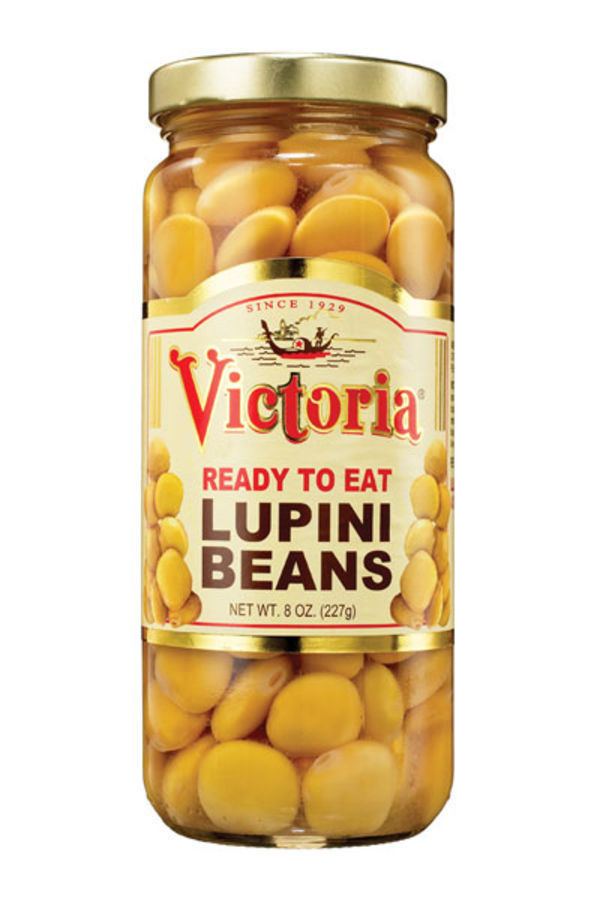 | ||
Similar Bean, Lathyrus sativus, European Yellow Lupine, peanut, Broad bean | ||
Boiled lupin beans benefits nutritional information
Lupin or lupini beans are the yellow legume seeds of Lupinus genus. They are traditionally eaten as a pickled snack food, primarily in the Mediterranean basin (L. albus) and Latin America (L. mutabilis). The bitter variety of the beans are high in alkaloids and are extremely bitter unless rinsed for a long time.
Contents
- Boiled lupin beans benefits nutritional information
- History and distribution
- Varieties
- Cuisine
- Nutrition
- Toxicity
- Lupin allergy
- References
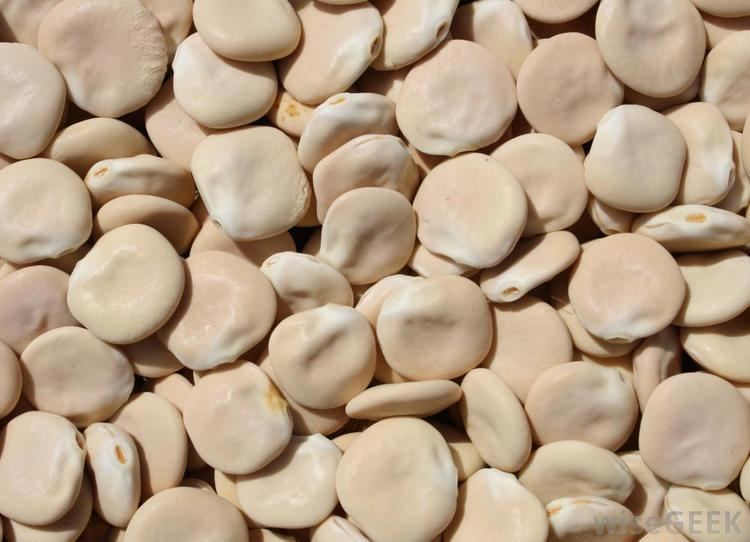
History and distribution

The earliest archaeological reports on lupins are referred to the Twelfth Dynasty of Egyptian Pharaohs (over 2 thousand years BCE). In their tombs, seeds of Lupinus digitatus Forsk., already domesticated in those times, were discovered. Seven seeds of this species were also retrieved in the tombs of this dynasty dated back to the 22nd century BCE. They are the most ancient evidence of lupin in the Mediterranean.
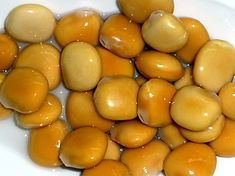
Lupini were popular with the Romans, who spread their cultivation throughout the Roman Empire. Today, lupini are most commonly found in Mediterranean countries and their former colonies, especially in Spain, Portugal, Greece, and Brazil, as across the Middle East (where it is part of Sham El Nessim holiday meals).
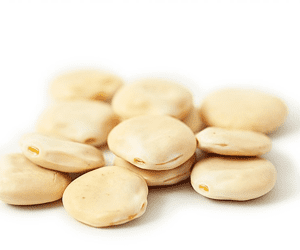
The Andean American variety of this bean, Lupinus mutabilis, was domesticated by pre-Incan inhabitants of present-day Peru. Rock imprints of seeds and leaves, dated around 6th and 7th century BCE, are exhibited in the National Museum of Lima. It was a food widespread during the Incan Empire. Lupins were also used by Native Americans in North America, e.g. the Yavapai people.
Varieties

Some varieties are referred to as "sweet lupins" because they contain much smaller amounts of toxic alkaloids than the "bitter lupin" varieties. Newly bred variants of the narrow-leafed or 'Australian Sweet Lupin' (L. angustifolius) lupins are grown in Australia, Germany and Poland; they lack any bitter taste and require no soaking in salt solution. The seeds are used for different foods from lupin flake, vegan sausages, lupin-tofu, and lupin flour. Given that lupin seeds have the full range of essential amino acids and that they, contrary to soy, can be grown in more temperate to cool climates, lupins are becoming increasingly recognized as a cash crop alternative to soy.
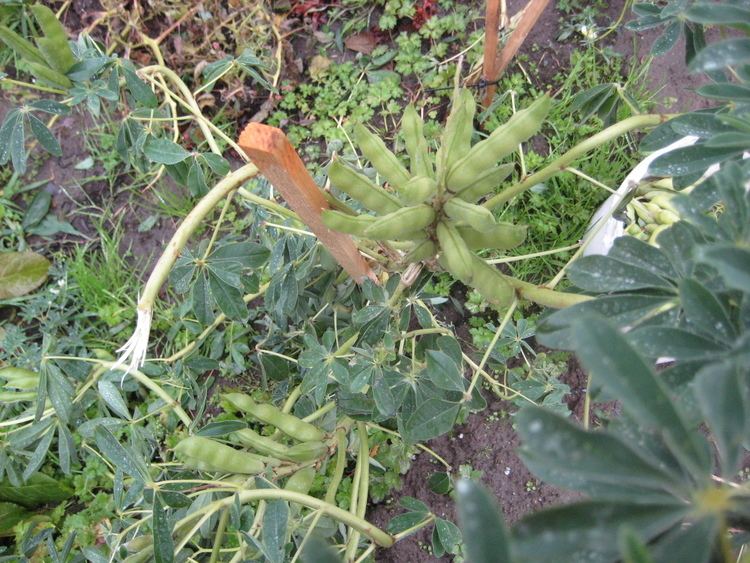
Three Mediterranean species of lupin (blue lupin, white lupin and yellow lupin) are widely cultivated for livestock and poultry feed. Bitter lupins in feed can cause livestock poisoning.
Lupins are currently under widespread cultivation in Australia, Europe, Russia, and the Americas as a green manure, livestock fodder and grazing plant, and high-protein additive for animal and human foods. In Australia, the danger of cross-pollination of the wild bitter and cultivated sweet low-alkaloid variety is understood to be unacceptable when testing reveals the presence of one bitter bean per hundred sweet beans, and a wide quarantine zone is maintained around lupin-growing croplands to prevent wind-blown wild pollen from having a large influence on crop toxicity.
Cuisine
The Andean lupin L. mutabilis, the Mediterranean Lupinus albus (white lupin), and Lupinus hirsutus are only edible after soaking the seeds for some days in salted water. In Ecuador, the lupin is often consumed as a ceviche-like street food known as "cevichochos".
Lupini beans are commonly sold in a brine in jars (like olives and pickles). They can be eaten by making a small tear in the skin with one's teeth and "popping" the seed directly into one's mouth, but can also be eaten with the skin on. Highly skilled lupini eaters learn to fissure the skin by rubbing the bean between forefinger and thumb. In countries like Portugal, "tremoços", are very popular in bars as a snack while drinking beer.
In Egypt, lupin is known by its Arabic name, "termes" (ترمس), and it has been sold by street vendors, as a very popular snack.
Lupin beans can be ground into a flour, and this is widely used in parts of Europe and in Australia as an additive to wheat flour, enhancing the flavour and lending a rich, creamy colour to the resulting foods.
Nutrition
The lupin is devoid of starch, which is very unusual for a species of edible bean. Lupins have a thick seed coat (25%) which consists mainly of cellulose (insoluble bran fiber) and its removal is the first step in lupin processing. The kernel (split) of lupin is rich in protein (40%), fiber (40%) and moderate in fat (8%) made up largely of unsaturated fatty acids. Intensive plant breeding programs have ensured that modern lupin varieties have relatively low levels of the alkaloids found in their ancestral genotypes. Lupins also contain moderate amounts of the carotenoids beta carotene, lutein, zeaxanthin, and tocopherols (vitamin E).
Australian sweet lupin features a higher calcium and phosphate content than cereals, with trace element content varying in line with the mineral content of the soil in which the lupin is grown.
Lupin oils have high antioxidant capacities due in part to the presence of tocopherol (vitamin E). The total vitamin E content is about 2.3-4.6 mg/kg of oil.
Toxicity
Lupin poisoning is a nervous syndrome caused by alkaloids in bitter lupins, similar to neurolathyrism. Lupin poisoning affects people who eat incorrectly prepared lupin beans. Mediterranean cultures prefer the historic bitter lupin beans with the required toxin-removal by traditional leaching in water preparation methods due to the better flavour that results. Improper preparation of bitter lupins with insufficient soaking allows pharmacologically significant amounts of the anticholinergic alkaloids to remain in the beans, and poisoning symptoms result.
While the alkaloids found in raw and dried beans are bitter and unpalatable to many, with merely insufficient soaking the level is reduced. There are several references in medical literature to poisoning caused by errors in lupini preparation.
Symptoms of lupin bean poisoning (from excess alkaloid in cooked food) include dilated unresponsive pupils, confusion, slowed thought and disorientation, flushed face and/or fever, high heart rate and blood pressure, tremors, difficulty with or slurred speech, in-coordination, dizziness, burning dry mouth, stomach pain, and anxiety or "malaise".
Many human symptoms are described in the Australian government's evaluation of lupin food and livestock fodder export safety standards in the medical literature review section:
Current media describes the symptoms when referring to recent Australian Medical Journal reports of poisoning from overly bitter lupin flour used in foods reported in the media.
Mycotoxic lupinosis is a disease caused by lupin material that is infected with the fungus Diaporthe toxica; the fungus produces mycotoxins called phomopsins, which cause liver damage.
Lupin allergy
Lupin allergy may cause life-threatening anaphylaxis in sensitive individuals. There is some cross-reactivity with peanut allergy, so nut allergy sufferers should exercise extreme caution with lupin-containing food. In the EU, lupin must be listed as an allergen in pre-packed foods where it has been used, but may still be hidden in over-the-counter products. This can be a significant problem for allergy sufferers since breads, pastries, pizzas, pasta, cakes and ice cream are all commonly sold over-the-counter, and all may contain lupin. Lupin has even been found in some tomato ketchup sauces. At present, no desensitization treatments are available, so avoidance is the only advice offered, alongside carrying an epi-pen and anti-histamine/anti-inflammatory medication.
